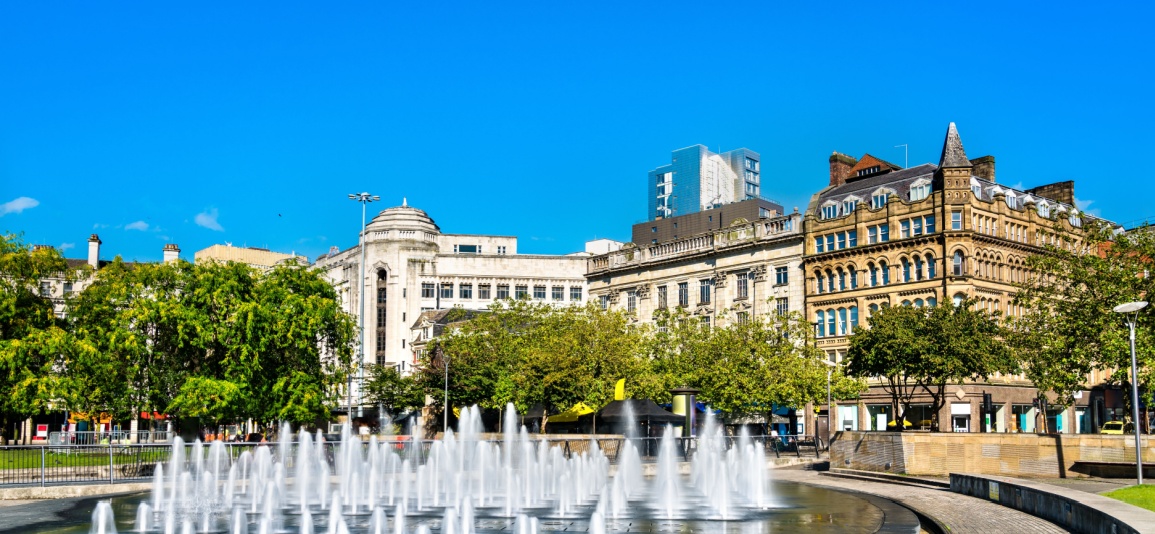Urban heat – How do we cool our cities?
Climate ResilienceArticleJune 14, 2024
As temperatures increase across the globe the question is raised – are urban buildings resilient to extreme temperatures? European cities are breaking temperature records. July 2023 was reported as the hottest month on record globally. London is expected to see a 3˚C increase in the average temperature of a summer day, by 2050.
Urban areas in different districts are not equally equipped to regulate temperatures in homes, workplaces, and public services. There's a lot we can learn from places that have regular temperatures over 30˚C for most of the year.
There are many benefits to having cooler cities, such as human health benefits, air quality, productivity, public safety, energy consumption and overall quality of life. Heat resilience doesn't have to be difficult, costly, or use lots of energy. There are plenty of simple design ideas that can be put in place during the design phase or added in later without breaking the bank.
5 urban designs to improve heat resilience
Shading
Shading had been incorporated into building design for centuries with warmer countries utilising pergolas, awnings and arcades. Biological and non-biological shading features can be incorporated into the design stage or by retrofitting. Heating and cooling buildings puts large energy demands on individuals, the addition of external shading can significantly reduce the energy needed to heat and cool buildings. Innovative shading such as the Clarke Quay Festival Village’s Rejuvenation in, Singapore, incorporates the need for shading and the area’s modern redesign in one.
Vegetation
Greenspaces within cities can substantially lower temperatures. They not only provide shade but but also encourage evapotranspiration which lowers temperatures. Satellite imaging can be used to monitor the extreme contrast between land surface temperatures in cities, compared to areas with parks and water features. Vegetation also absorbs carbon, reducing the impact of global warming.
Several benefits of incorporating green spaces into cities include:
- Improved air quality and lower greenhouse gas emissions
- Flood prevention – green areas slow down the flow of surface water during heavy rainfall, which helps to prevent flash floods
- Improved wellbeing – human health benefits include physical comfort, psychological and emotional relaxation, and also social interaction
- Promoting biodiversity – cites with pockets of vegetation allow for a wider species diversity to thrive in urban areas. Many local authorities have started initiatives to promote nature-rich green space
- Reduced energy usage due to lower demand on cooling systems.
Improving air flow
The term ‘passive design’ is being used more frequently in building design. Passive design strategies help to promote thermal comfort without the use of electricity to power cooling systems, such as air conditioning.
Passive design includes the use of wind catchers and solar chimneys to promote air flow. Non-mechanical (electrical) cooling of buildings, like natural ventilation and effective shading, provides thermal comfort and reduces a building’s energy consumption and waste heat generated by mechanical cooling systems. Research shows that passive cooling in buildings could reduce energy consumption by up to 23.6%.
Buildings that prevent wind flow contribute to slower wind speeds and reduce the ability to remove heat. Wind corridors allow for the movement of cool air from naturally cool sources, such as water bodies and parks. Other design strategies to promote air flow include aligning building corridors with the prevailing wind and connecting open spaces.
Building materials
Air-conditioning accounts for 10% of global energy consumption today. Naturally cooling building designs and materials can drastically reduce the need for air conditioning. Dense materials such as stone and concrete are good insulators to heat due the ability to slow heat transmission once warmed. Glass is a common building component in urban areas especially office building. Choosing glass which has a low solar heat gain coefficient (SHGC) reduces the overall heat transmitted into a building.
Building surfaces with a high solar reflectivity, such as a white roof, can reduce building temperatures by 3°C. Roofs typically make up around 30% of urban surfaces, reduce the amount of heat that building directly absorb from UV helps to reduce the temperature within the building and surrounding area. Promoting high solar reflectivity surfaces can be retrofitted post building construction with the addition of coatings.
Roofs usually account for about 30% of urban surfaces. They help to decrease the heat absorbed by buildings from UV rays, which in turn lowers the temperature inside the building and the surrounding area. Coatings can be used to add high solar reflectivity to surfaces post building construction.
Water features
Contemporary water features in cities include ponds, pools, fountains, sprinklers and misting systems. Surface water has been shown to create a maximum temperature reduction of 1°C. The greatest localised cooling effect is from water droplets produced from moving water. Larger bodies of water near cities can bring down temperatures by as much as 4˚C, especially when the area around the water is shaded.
We can help
If you want to learn more about managing heat risks, get in touch with the author of this article. At Zurich Resilience Solutions, our specialists in climate resilience can provide customised services to help you.
